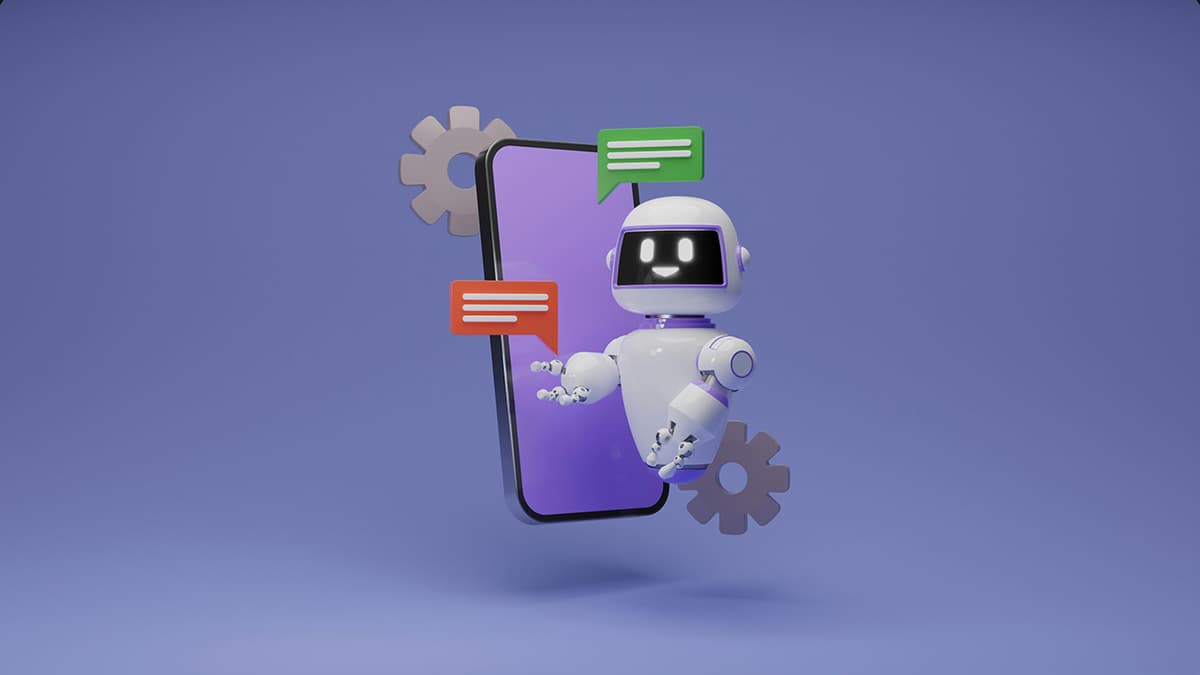The Art of Talking to Customers: A Guide to Empathetic Customer Service
Good customer service is about understanding and caring for the person you're helping. When someone has a problem, they want to be heard, not just receive a quick fix. This guide provides tips and examples to ensure every interaction with customers feels helpful and kind.
1. Listen Actively
Active listening is essential in customer service. It's about truly comprehending the sentiment and details behind the customer's words.
a. Full Attention
Focus entirely on the customer when they speak. This helps you understand the issue and makes them feel valued.
Example:
Customer: "Every time I use your app, it crashes on me."
Service Provider: "I'm sorry to hear that you're experiencing this issue. Does the app crash during a specific action, or is it happening randomly?"
b. Refrain from Interrupting
Allow the customer to finish before you respond. Interrupting can seem dismissive.
Example:
Customer: "I purchased the premium version, but I still see ads and..."
Service Provider (interrupting): "Have you tried restarting the app?"
Customer: "Let me finish. I still see ads and can't access premium features."
c. Confirm Understanding
Paraphrase or summarize the customer's concerns. This shows you've grasped the issue.
Example:
Customer: "I ordered a vegetarian meal, but I received one with meat."
Service Provider: "I'm truly sorry for the oversight. To clarify, you ordered a vegetarian meal but received a non-vegetarian one, correct?"
d. Non-verbal Cues
Use non-verbal responses like nodding or maintaining eye contact to show you're engaged.
Example:
Customer (in person): "I've had repeated issues with my account."
Service Provider: [Nods] "I can see why that would be concerning. Let's dive into the account details."
e. Avoiding Assumptions
Don't jump to conclusions before hearing the complete context.
Example:
Customer: "I can't seem to get the discount applied."
Service Provider (assuming): "Did you enter the promo code?"
Customer: "Yes, I did. The issue is the code says it's expired."
Active listening builds trust and rapport, paving the way for effective solutions.
2. Validate Emotions
Recognizing and validating emotions can foster trust and understanding. This means acknowledging feelings without necessarily agreeing.
a. Show Empathy
Try to understand the customer's perspective.
Example:
Customer: "Every time I contact support, I get transferred multiple times."
Service Provider: "I can imagine how frustrating that must be for you. Let's resolve your issue right now."
b. Avoid Dismissive Language
Use phrases that convey understanding, avoiding belittling the customer's concerns.
Example:
Customer: "Your website is so confusing."
Service Provider: "I'm sorry to hear you're having trouble. Let's walk through it together."
c. Address Emotions, Not Just Issues
Sometimes emotions are more pressing than the actual problem.
Example:
Customer: "I feel ignored. I've sent multiple emails with no response."
Service Provider: "I'm truly sorry you feel that way. Let's address your concerns right now."
d. Use Reflective Listening
Reflect the customer's feelings back to them.
Example:
Customer: "I'm really angry about the unexpected charges."
Service Provider: "I understand your anger. Let's review the bill together."
e. Offer Genuine Apologies
A sincere apology can help mend fences.
Example:
Customer: "I was assured this would be resolved by now."
Service Provider: "I sincerely apologize for the oversight. Let's sort this immediately."
Validating emotions humanizes interactions, leading to effective solutions and lasting relationships.
3. Personalize the Interaction
Adding a personal touch makes customers feel valued and unique.
a. Use Their Name
Addressing customers by name creates a connection.
Example:
Customer: "I haven't received my order confirmation."
Service Provider: "I'm sorry about that, Mr. Johnson. Let me check your order details."
b. Recall Past Interactions
Referencing previous interactions can show that you value their patronage.
Example:
Customer: "I'm facing the same issue again."
Service Provider: "I remember you mentioned this last time, Ms. Perez. Let's get this resolved."
c. Offer Tailored Solutions
Provide advice that caters to the customer's specific needs.
Example:
Customer: "I'm not tech-savvy."
Service Provider: "I'll guide you step-by-step through the process."
d. Acknowledge Special Occasions
Mentioning anniversaries or special events adds a unique touch.
Example:
Customer: "I need to upgrade my plan."
Service Provider: "Of course, Mrs. Patel. And happy 1-year anniversary with us!"
e. Be Adaptable
Match the customer's communication style for smoother interactions.
Example:
Customer (informally): "Got a tiny issue with the app."
Service Provider: "No problem! Let’s sort that out for you."
f. Offer Additional Personalized Recommendations
Suggest products based on the customer's history.
Example:
Customer: "I loved the book I ordered."
Service Provider: "I'm glad! You might also like [specific book title]."
Personalized interactions foster loyalty and positive brand perception.
4. Offer Tailored Solutions
Offering solutions that cater to the customer's situation shows active engagement and care.
a. Present Multiple Options
Giving choices empowers the customer in the resolution process.
Example:
Customer: "The software isn't compatible."
Service Provider: "We can offer a compatible version or provide a full refund. Which do you prefer?"
b. Anticipate Follow-Up Needs
Think ahead to offer comprehensive solutions.
Example:
Customer: "I forgot my charger."
Service Provider: "We can ship a replacement charger to your location. Would you like a portable power bank for emergencies, too?"
c. Provide Immediate and Long-Term Solutions
Balance temporary fixes with permanent solutions.
Example:
Customer: "The tutorials keep buffering."
Service Provider: "You can lower the quality. I'll report this bug to our tech team."
d. Acknowledge If You Don't Have an Immediate Answer
Commit to finding a solution if you don't know.
Example:
Customer: "Do you have vegan options?"
Service Provider: "Let me check with our product team and get back to you."
e. Incorporate Feedback into Solutions
Integrate customer suggestions into your response.
Example:
Customer: "Your app lacks a dark mode."
Service Provider: "Thanks for your feedback! In the meantime, consider using your device's built-in settings for comfort."
f. Go the Extra Mile
Small gestures can turn negative experiences positive.
Example:
Customer: "I missed the discount period."
Service Provider: "Let's offer you a special discount code valid for the next 48 hours."
Tailored solutions demonstrate commitment to customer satisfaction and build trust.
5. Empathize and Relate
Expressing empathy in customer service strengthens the connection.
a. Acknowledge Their Feelings
Recognizing emotions can make the customer feel valued.
Example:
Customer: "I'm overwhelmed with all these features."
Service Provider: "It might feel overwhelming. I'm here to help simplify things."
b. Share a Personal Experience
Letting the customer know you've been in their shoes can be comforting.
Example:
Customer: "I'm nervous about my first online purchase."
Service Provider: "I felt the same way when I first purchased online. Our platform is secure, and I’ll guide you through it."
c. Use Comforting Language
The right words can make a significant difference.
Example:
Customer: "I accidentally deleted files!"
Service Provider: "That must be stressful! Let's work together to recover them."
d. Be Patient and Reassuring
Providing reassurance can alleviate worries.
Example:
Customer: "I think I've lost all my data."
Service Provider: "Let's go through the recovery process together."
e. Offer Encouragement
Boosting the customer's confidence can be valuable.
Example:
Customer: "I don't think I'll get the hang of this software."
Service Provider: "With a little guidance, you'll become a pro!"
f. Validate Their Experience
Let customers know their feelings are valid.
Example:
Customer: "I have to explain my issue every time I call."
Service Provider: "That sounds frustrating. I apologize for the inconvenience."
Empathy fosters trust and increases the likelihood of repeat business.
6. Follow Up
Following up demonstrates a commitment to customer satisfaction.
a. Confirm Resolution
Check in to ensure the problem was resolved.
Example:
Service Provider: "Hello Ms. Fernandez, have you noticed any improvement since we addressed the glitch in our app?"
b. Check on Additional Needs
Customers may have further questions after resolution.
Example:
Service Provider: "Now that we’ve set up your new device, do you have any questions?"
c. Gauge Overall Experience
Feedback helps improve service quality.
Example:
Service Provider: "On a scale of 1 to 10, how would you rate your recent support experience?"
d. Offer Additional Assistance
Show you're available for more than just the initial issue.
Example:
Service Provider: "Is there anything else related to your account you need help with?"
e. Thank Them for Their Patience
A simple thank you can maintain goodwill.
Example:
Service Provider: "Thank you for your patience while we resolved the issues. We appreciate it."
f. Provide Updates
Keep customers informed about ongoing issues.
Example:
Service Provider: "We're still working on retrieving your data and making good progress."
g. Reiterate Availability
Remind customers that support is ongoing.
Example:
Service Provider: "I'm glad we resolved the issue. You can always reach out if you have further concerns."
Follow-ups emphasize the brand's commitment and build lasting relationships.
7. Stay Calm and Professional
Staying calm when handling difficult customers is crucial for diffusing tension.
a. Acknowledge their Emotion
Recognize the customer's feelings.
Example:
Customer: "I can't believe you overcharged me!"
Service Provider: "I understand your frustration. Let's go over the charges together."
b. Avoid Arguing
Engaging in a debate can escalate the issue.
Example:
Customer: "Your product is a complete waste of money!"
Service Provider: "I'm sorry you feel that way. Can you share more about what went wrong?"
c. Use a Calm Tone
Your tone can influence the conversation.
Example:
Customer: "Every time I call, I get transferred!"
Service Provider: "I understand how that can be frustrating. I'm here to assist you."
d. Ask Open-ended Questions
This diverts focus from emotions to the issue.
Example:
Customer: "Your app keeps crashing!"
Service Provider: "Can you tell me more about when this happens?"
e. Offer a Genuine Apology
An apology, even if not directly your fault, shows care.
Example:
Customer: "I've been on hold for 30 minutes!"
Service Provider: "I truly apologize for the wait. Let's address your concerns."
f. Set Boundaries if Necessary
Ensure the conversation remains respectful.
Example:
Customer: "You people are incompetent!"
Service Provider: "I understand you're upset. I'm here to help, but I'd appreciate it if we could keep this respectful."
g. Redirect to a Solution
Shift focus to potential solutions.
Example:
Customer: "Your delivery service is always late!"
Service Provider: "I'm sorry for the inconvenience. Would you prefer a different delivery method?"
Staying calm transforms volatile situations into productive conversations.
Talking to customers should be about kindness, understanding, and listening. When customers approach us, they're looking for help and understanding. Remember to listen carefully, make them feel valued, and find the best way to assist them. This not only solves their immediate concerns but also fosters lasting positive connections.
(Edited on September 4, 2024)












